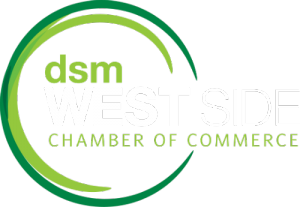Bringing Order to Growth: How Des Moines Businesses Can Scale Smoothly and Sustainably
Running a growing business can feel like steering a ship while still building the deck. For members of the Des Moines West Side Chamber of Commerce, growth is often a double-edged sword — new opportunities bring complexity, and without the right systems, even success can feel chaotic.
This article explores practical ways to bring order to expanding operations — by streamlining processes, upgrading systems, and adopting smarter tools that make scaling sustainable rather than stressful.
TL;DR
Growth without structure causes friction.
To scale smoothly:
-
Map and simplify your core processes.
-
Invest in systems that talk to each other.
-
Automate repetitive tasks.
-
Standardize workflows so your people can focus on value, not admin.
-
Use digital tools to reduce clutter and decision lag.
The Growth Paradox: When “More” Means “Messier”
As small businesses grow, they hit a familiar wall — what worked for five employees breaks down with fifty.
Communication clogs, manual reporting slows decisions, and you start patching systems instead of improving them.
Common warning signs:
-
You rely on one or two “indispensable” people to hold it all together.
-
Multiple spreadsheets track the same thing differently.
-
Customers notice delays before you do.
The solution? Transition from ad hoc management to systematic operation.
The Order-Building Framework
Use this simple structure to regain control:
|
Step |
Focus Area |
Key Question |
Outcome |
|
1 |
Process Mapping |
Where do we lose time or info? |
Clear view of inefficiencies |
|
2 |
Tool Consolidation |
What overlaps or causes friction? |
Simplified tech stack |
|
3 |
Workflow Standardization |
Are tasks performed consistently? |
Predictable, scalable execution |
|
4 |
Automation & Delegation |
What’s repetitive or low-value? |
Time savings + accuracy |
|
5 |
Performance Feedback Loop |
How do we measure improvement? |
Continuous refinement |
From Chaos to Clarity: Streamlining Processes
When everything feels urgent, it’s usually a sign that nothing is clearly defined.
Start with the basics — identify your core workflows (sales, fulfillment, customer service, billing). Document them, visualize handoffs, and remove redundant steps.
Try a visual process tool such as Lucidchart, Miro, or SmartDraw to map the flow. Once it’s visible, inefficiencies become obvious.
You might also consider integrating tools like HubSpot for CRM, Asana for project management, or ClickUp to manage workflows across departments.
Tools That Buy Back Time
Efficiency often starts with small, unglamorous wins — saving ten minutes on every approval or invoice adds up.
For example, learning new ways to insert a signature in Word eliminates print-scan-email cycles. This simple change keeps contracts and approvals moving, reducing lag and freeing up your team for more strategic work.
How-To: Improve Systems Without Overhauling Everything
-
Audit your tools.
List what every app does, who uses it, and what overlaps.
-
Pick a “system of record.”
Decide which tool owns customer data, finances, or HR — no duplicates.
-
Integrate, don’t duplicate.
Use connectors like Zapier or Make to sync information between apps.
-
Train and standardize.
Document every recurring process in a shared location like Confluence or Basecamp.
-
Measure one key metric per system.
Track efficiency, not just activity.
FAQ: “What If My Team Resists Change?”
Q: How do I get my staff on board with new systems?
A: Involve them early. Ask what frustrates them and build improvements around those pain points.
Q: Isn’t this expensive?
A: Not implementing change costs more. Lost time and duplicated effort drain revenue quietly every quarter.
Q: How long does it take to see results?
A: With clear ownership and training, you’ll feel operational lift in 30–60 days.
Q: What’s the one thing I should start today?
A: Document your top five recurring processes. You can’t improve what you can’t see.
Quick Reference: The Order Readiness Checklist
All tools reviewed for redundancy
One “source of truth” for customer data
Approval steps digitized
Staff trained on standard workflows
Metrics defined and reviewed monthly
Growth shouldn’t mean losing control — it should mean doing more with less friction.
By streamlining systems and investing in the right tools, Des Moines West Side Chamber businesses can grow confidently, keeping their teams aligned, their customers happy, and their operations running like clockwork.
This Hot Deal is promoted by Des Moines West Side Chamber.

